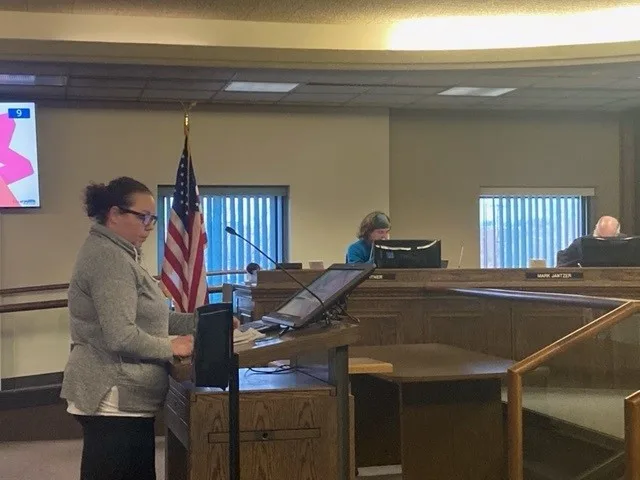

MINOT – Backyard chickens within city limits was discussed at the Minot City Council meeting Monday.
Bailee Salteman, Minot, said she emailed the council a few months ago about changing the city Ordinance 7 to allow backyard chickens. She said Fargo allowed chickens in 2017 and Bismarck in 2019, and after looking at their ordinances suggested an ordinance allowing four hens, no roosters, and requiring that the chicken coop and run remain 20 feet from the neighbors’ houses and five feet from the property line. The chickens would be included in the 10 pet limit per household and chickens would need to stay in the run at all times unless they are in a fenced yard or garden.
“Some of the concerns were noise,” said Salteman. “The noise a hen makes is between 60 and 70 decibels which is around what a normal human conversation is. A robin is 61 decibels, and a dog’s bark is between 90 and 110. Chickens go to their coop until sundown and stay there until the sun is up.”
Salteman said the main concern is disease. She spoke with Ethan Andress, chairman of the North Dakota Department of Agriculture, on Avian Flu statistics from 2015 to 2022.
“He states that there were two commercial flocks in Cass County infected in 2015,” said Salteman. “No backyard cases statewide, and there had not been a case of the highly pathogenic Avian Flu in the Fargo area until 2022 when there were two cases of the flu in Cass County, both outside of Fargo.”
Salteman said Andress stated that taking precautions such as keeping the chickens in their coop and keeping the coop clean would keep the risk low. Salteman also mentioned that the risk of salmonella is not zero, but it is slim and has always been a small risk when eating certain foods.
According to Salteman, based on what other cities told her, the workload of animal control would hardly increase due to chickens being allowed. She also spoke to several cities about an increase in predators of which she said there was no increase in North Dakota. Salteman said the waste from chickens makes for good fertilizer that can be recycled. According to Salteman it takes eight to ten hens to make up as much waste as one 40-pound dog.